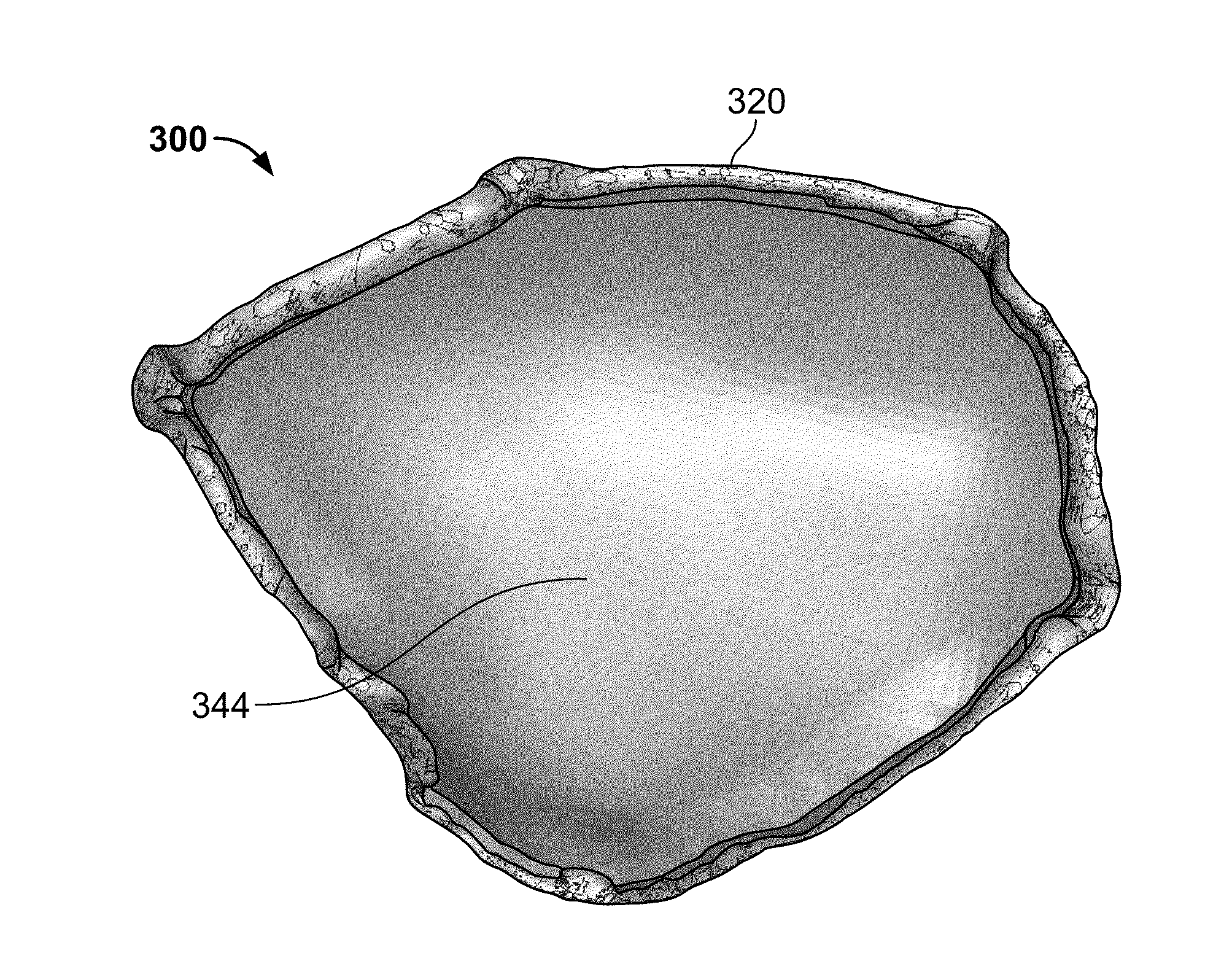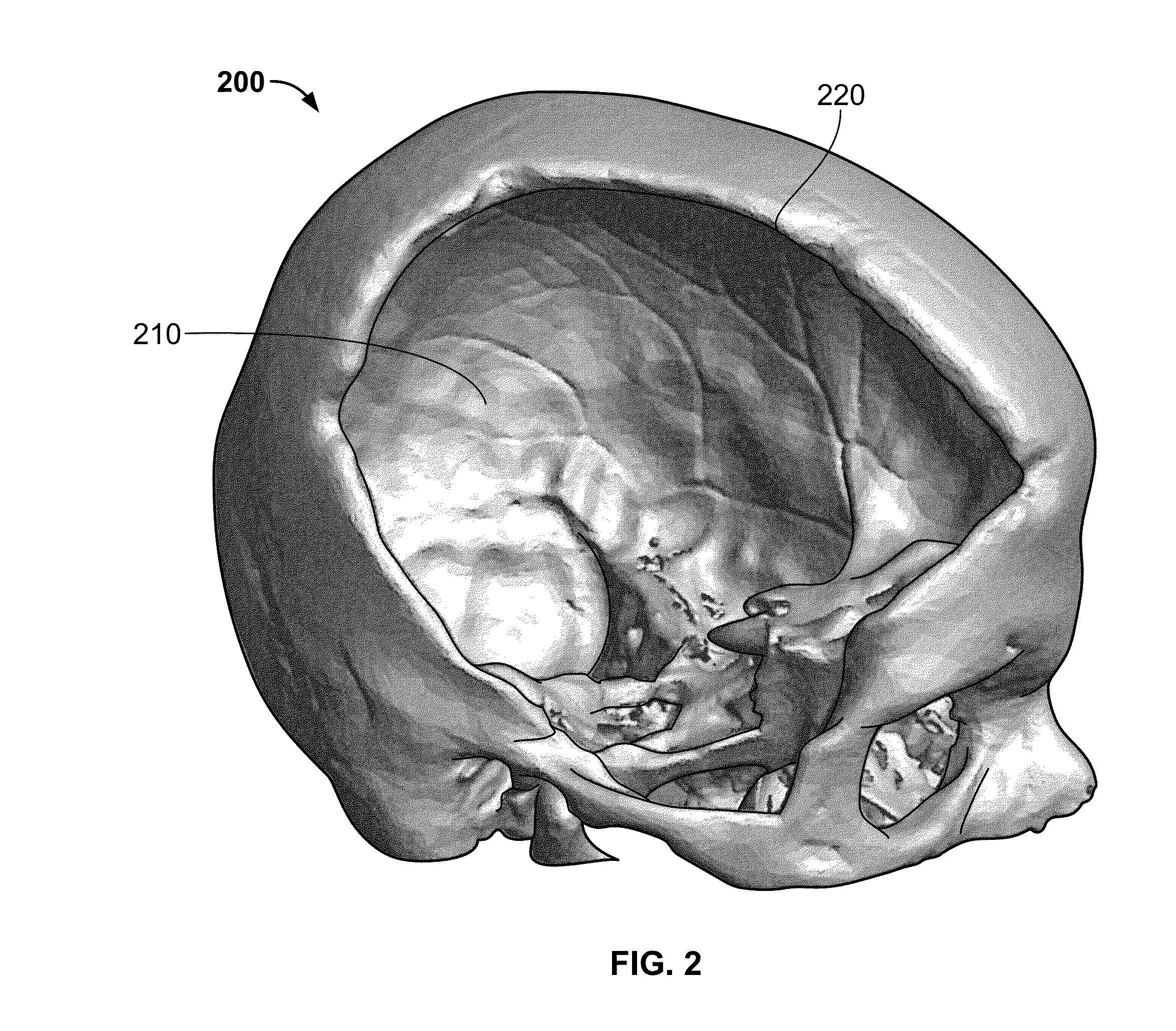Patient-specific craniofacial implants
a craniofacial implant and patient-specific technology, applied in the field of patient-specific craniofacial implants, can solve the problems of voids of different sizes and shapes in bone and soft tissue, voids left in the frontal, parietal and/or temporal areas of the craniofacial skeleton that need repair, and lack of adequate aesthetic reconstruction of the area through bone void filling. to achieve the effect of restoring proper appearan
- Summary
- Abstract
- Description
- Claims
- Application Information
AI Technical Summary
Benefits of technology
Problems solved by technology
Method used
Image
Examples
Embodiment Construction
[0053]FIG. 1A is a perspective view of a patient's face 100 exhibiting temporal hollowing 120 in the pterional region of the skull of the patient. The size, shape and location of such temporal hollowing of a patient may differ based on patient's anatomy as well as the type of injury and / or the amount of tissue atrophy incurred by the patient in this region.
[0054]FIG. 1B is a perspective view of the patient's face with a repaired pterional region such that the temporal hollowing has been corrected and is no longer present. After an initial surgery to correct a bony void is performed, a subsequent procedure using a pterional graft, PMMA, filler, absorbable material or tissue engineered substrate, for example, may be performed in order to repair the soft tissue defect. The subsequent procedure may be conducted via injection of PMMA percutaneously into this region or by placing a pterional flap through a small incision made in the skin. However, a patient will likely exhibit aesthetic a...
PUM
 Login to View More
Login to View More Abstract
Description
Claims
Application Information
 Login to View More
Login to View More - R&D
- Intellectual Property
- Life Sciences
- Materials
- Tech Scout
- Unparalleled Data Quality
- Higher Quality Content
- 60% Fewer Hallucinations
Browse by: Latest US Patents, China's latest patents, Technical Efficacy Thesaurus, Application Domain, Technology Topic, Popular Technical Reports.
© 2025 PatSnap. All rights reserved.Legal|Privacy policy|Modern Slavery Act Transparency Statement|Sitemap|About US| Contact US: help@patsnap.com



